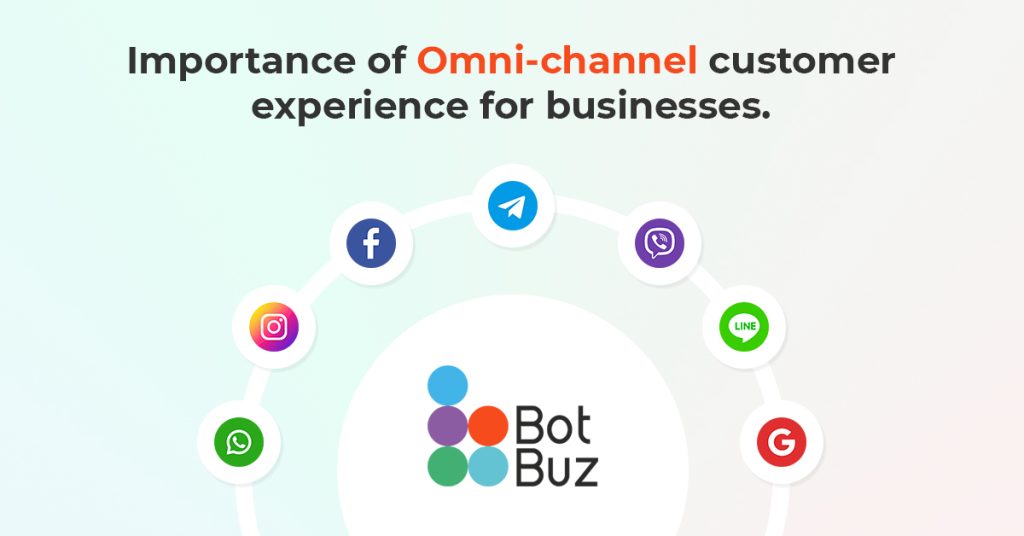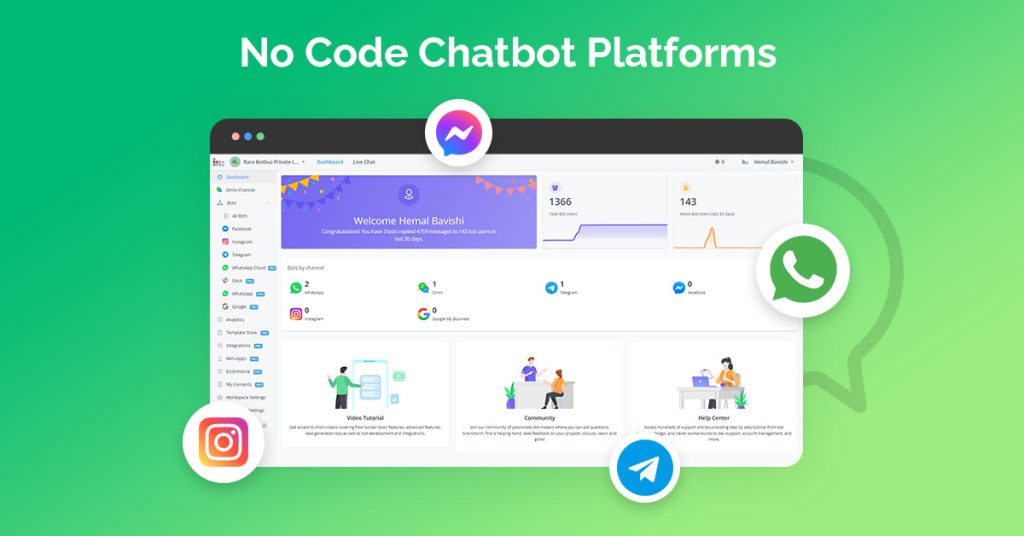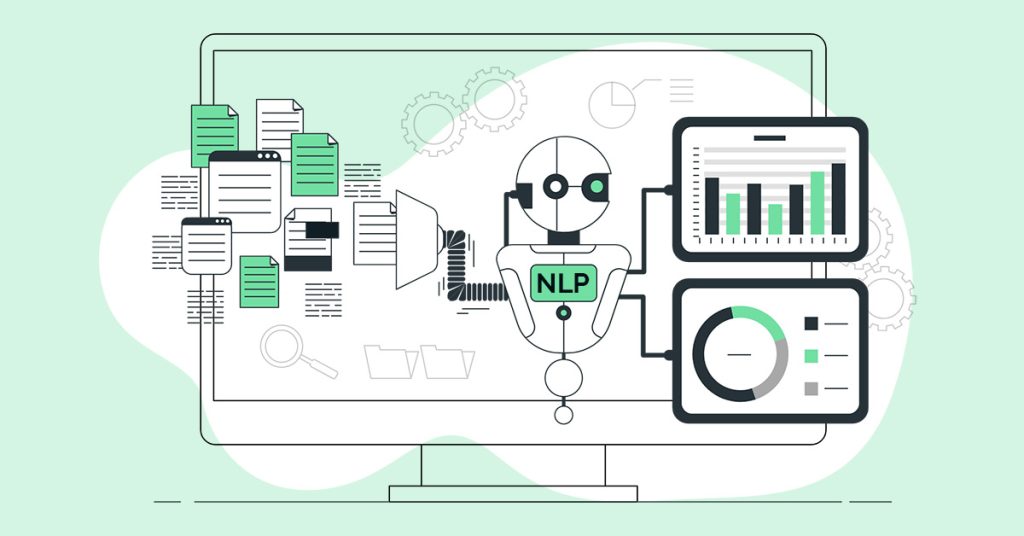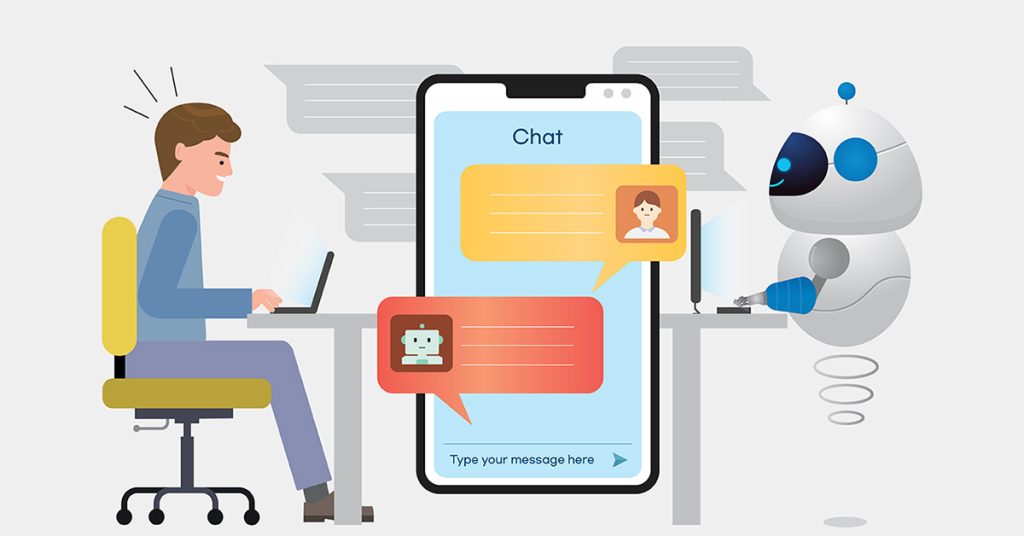Introduction to Omni-Channel Customer Experience:
In today’s digital world, customers want to interact with businesses on their own terms. They use the channels that are most convenient for them. This means that businesses need to adopt an omnichannel customer experience strategy.
Omnichannel customer experience (CX) is the practice of providing customers with a consistent & seamless experience across all channels. It includes SMS, WhatsApp, voice & social media. This means that customers should be able to start a conversation with a business on one channel and seamlessly continue it on another channel, without having to repeat themselves or provide the same information multiple times.
There are many benefits to adopting an omnichannel CX strategy. For one, it can help to improve customer satisfaction. When customers have a positive experience with a business, they are more likely to do business with that business again in the future. Additionally, an omnichannel CX strategy can help to increase sales. When customers can easily find the information they need and complete transactions on the channels they prefer, they are more likely to buy from the business.
Popular omnichannel channels that businesses can use to engage with customers:
SMS: SMS is a great way to reach customers quickly and easily. It can be used to send reminders, notifications, and updates.
WhatsApp: WhatsApp is a popular messaging app that can be used to chat with customers one-on-one or in groups. It can also be used to send files and images.
Voice: Voice channels, such as phone calls and live chat, can be used to provide customers with more personalized support.
Social media: Social media platforms, such as Facebook, Twitter, and Instagram, can be used to connect with customers and build relationships.

Understanding the Omni-Channel Approach:
The omni-channel approach is a customer-centric approach that integrates various channels. It integrates to create a seamless and consistent customer experience. This means that customers can interact with a business on their preferred channel. Their information is shared across all channels so that they have a consistent experience with the business.
The omni-channel approach is becoming important as customers are using multiple channels to interact with businesses. For example, a customer might start their research for a product online, then visit a physical store to try it out & then complete the purchase online. By using an omni-channel approach, businesses can ensure that they provide a consistent experience throughout the customer journey, no matter how the customer chooses to interact with them.
Implementing an omni-channel approach:
Identify your customers’ channels: Businesses need to identify channels that customers are using to interact with them. This will help you to determine which channels you need to focus on.
Integrate your channels: Once you have identified your channels, you need to integrate them. Thus, customers can easily switch between them. This can be done through a customer relationship management (CRM) system or a customer experience platform.
Personalize the experience: The omni-channel approach is all about providing a personalized experience for each customer. It means that you need to collect data about customers. Thus, using it to personalize their interactions with your business.
Measure your results: It is important to measure the results of your omni-channel approach. It helps to see what’s working & make improvements as needed.
Enhanced Customer Engagement and Satisfaction: Consistency in messaging and interaction is essential for enhancing customer engagement and satisfaction. When customers are greeted with a consistent experience, they feel valued and appreciated. This leads to stronger connections with the business and higher satisfaction levels.
Ways to ensure consistency in messaging and interaction:
Use a consistent brand voice: Your brand voice should be consistent across all channels, from your website to your social media to your customer service interactions. This will help customers to identify your brand and feel like they are interacting with a real person.
Use a consistent messaging strategy: Your messaging strategy should be consistent across all channels. This means using the same tone, language, and style of communication no matter how customers are interacting with you.
Personalize your interactions: Even if you are using a consistent messaging strategy, you can still personalize your interactions with customers. This means using their name, addressing their specific needs, and being responsive to their questions and concerns.
Be timely and reliable: Customers expect businesses to be timely and reliable in their interactions. This means responding to their inquiries promptly and following through on promises.
Make it easy for customers to get help: Customers should be able to easily get help if they need it. This means providing clear and concise instructions, making contact information easy to find, and offering multiple ways to get in touch.
Listen to your customers: The best way to understand what your customers want and need is to listen to them. This means collecting feedback, responding to complaints, and asking for their input on new products or services.
Be proactive: Don’t wait for customers to come to you with problems. Be proactive in identifying and resolving issues before they become major problems.
Go the extra mile: Sometimes, the little things can make a big difference in customer satisfaction. This means going the extra mile to help customers, even if it’s not required.
Show appreciation: Customers appreciate being appreciated. This means thanking them for their business, their feedback, and their loyalty.
Optimizing Customer Support and Issue Resolution: Seamless transitions between channels ensure that customers receive timely assistance, regardless of their chosen communication method. This can be achieved by using a customer relationship management (CRM) system that integrates all of your customer touchpoints. This way, customer information is shared across all channels, so that agents can see what the customer has already done and what they need help with.
Ways to optimize customer support and issue resolution:
Use a knowledge base: A knowledge base is a collection of articles and FAQs that can be used to help customers find answers to their questions. This can help to reduce the number of customer support tickets and free up time for customer service agents to focus on more complex issues.
Use chatbots: Chatbots are computer programs which can simulate conversation with humans. They can be used to answer simple questions and provide basic support. This can help to reduce the workload on customer service agents and free them up to focus on more complex issues.
Use social media: Social media can be used to engage with customers and provide support. This can be a great way to reach customers who are not using traditional channels.
Use surveys and feedback: Surveys and feedback can be used to collect information from customers about their experience with your business. This information can be used to improve customer support and issue resolution.
Boosting Conversion Rates and Sales:
An integrated approach to boosting conversion rates and sales guides customers through the purchase journey, increasing conversion rates and overall sales. This means that all of your marketing and sales channels are working together to create a seamless and consistent experience for customers.
Ways to create an integrated approach to boosting conversion rates and sales:
Use a customer relationship management (CRM) system: A CRM system can help you to track customer interactions across all channels. This will help you to identify patterns in customer behavior and tailor your interactions accordingly.
Use a marketing automation platform: A marketing automation platform can help you to automate your marketing campaigns. This will free up your time so that you can focus on other tasks, such as customer service.
Use a sales CRM system: A sales CRM system can help you to track your sales pipeline and identify opportunities. This will help you to close more deals and increase your sales.
Use a website analytics tool: A website analytics tool can help you to track your website traffic and identify areas where you can improve your conversion rate.
Use A/B testing: A/B testing is a method of testing different versions of a webpage or marketing campaign to see which one performs better. This helps to improve conversion rate.
Personalize your communications: Personalizing your communications with customers can help you to increase their engagement and improve your conversion rate.
Offer incentives: Offering incentives, such as discounts or free shipping, can help you to encourage customers to convert.
Make it easy to buy: Make sure your checkout process is easy and straightforward. This will help to reduce the number of abandoned carts.
Follow up with customers: After a customer makes a purchase, follow up with them to thank them for their business and encourage them to come back.
Overcoming Challenges of Omni-Channel Implementation:
Overcoming the challenges of omni-channel implementation requires careful planning and execution. Here are some of the challenges that businesses face when implementing omni-channel:
Balancing complexity: Omni-channel can be complex to implement. It requires businesses to integrate multiple channels and systems. This can be a challenge. Especially for businesses that are not already using customer relationship management.
Maintaining consistency: Omni-channel requires businesses to provide a consistent experience across all channels. This can be a challenge, as different channels have different strengths and weaknesses. For example, a live chat agent may be able to provide more personalized service than a chatbot. But a chatbot may be able to handle more customer inquiries at once.
Allocating resources: Omni-channel requires businesses to allocate resources to all of their channels. This can be a challenge, as businesses may not have the resources to invest in all channels equally.
How to overcome the challenges of omni-channel implementation?
Start with a clear strategy: Before you start implementing omni-channel, it’s important to have a clear strategy in place. This strategy should outline your goals for omni-channel and how you plan to achieve them.
Choose the right tools: There are a number of tools available to help businesses implement omni-channel. It’s important to choose the right tools for your business’s needs.
Get buy-in from all stakeholders: Omni-channel implementation requires the buy-in of all stakeholders, including employees, customers, and partners. It’s important to communicate the benefits of omni-channel to all stakeholders and get their support.
Start small: Don’t try to implement omni-channel all at once. Start with a few channels and then gradually add more channels as you get more experience.
Be patient: Omni-channel implementation takes time and effort. Don’t expect to see results overnight. One needs to be patient and persistent and you will eventually achieve your goals.
Role of chatbot in providing Omni-channel customer experience:
Chatbots can play a significant role in providing omnichannel customer experience. Here are some of the ways chatbots can provide omnichannel customer experience:
Answering customer questions: Chatbots can answer customer questions 24/7. It can free up human customer service representatives to handle more complex issues.
Providing self-service: Chatbots can provide self-service options. It can provide options like allowing customers to track orders, check account balances. It also allows them to make changes to their profiles. This can help to reduce the number of customer inquiries that need to be handled by human customer service representatives.
Personalizing the customer experience: Chatbots can personalize the customer experience by remembering customer preferences & providing relevant information. For example, a chatbot can remember a customer’s favorite products. It also suggests similar products when the customer is browsing the website.
Cross-selling and upselling: Chatbots can cross-sell and upsell products & services to customers. For example, a chatbot can suggest related products to a customer who is viewing a product on the website.
Generating leads: Chatbots can generate leads by qualifying potential customers and collecting their contact information.
Gathering feedback: Chatbots can gather feedback from customers about their experience with the business. This feedback helps to improve the customer experience.
Overall, chatbots can be a valuable tool for providing omnichannel customer experience. By automating tasks, providing self-service options, and personalizing the experience, chatbots can help businesses to improve customer satisfaction and loyalty.
Botbuz is a no-code and omni-channel chatbot builder. It provides businesses with the ability to create chatbots that can be used across multiple channels. It can be used across various channels such as SMS, WhatsApp, and Facebook Messenger. Botbuz also offers a variety of features. It helps to personalize the chatbot experience, such as the ability to integrate with CRM systems and the ability to use natural language processing.
Botbuz offers a variety of features that make it a powerful tool for businesses of all sizes, including:
- A drag-and-drop builder that makes it easy to create chatbots without any coding experience
- A library of pre-built chatbot templates that can be customized to meet the needs of any business
- Integrations with popular messaging platforms, such as WhatsApp, Facebook Messenger, and Telegram
- The ability to deploy chatbots across multiple channels, such as websites, mobile apps, and social media
- Analytics tools that track chatbot performance and provide insights into customer behavior
Botbuz is a great option for businesses that are looking to improve their customer experience and provide 24/7 support to their customers. It is also a cost-effective solution, as businesses only pay for the features they need.
Benefits of using Botbuz:
No code: Botbuz is a no-code chatbot builder, which means that businesses can create and deploy chatbots without any coding experience. This is a great option for businesses of all sizes, including small businesses and startups.
Pre-built templates: Botbuz offers a library of pre-built chatbot templates that can be customized to meet the needs of any business. This makes it easy to get started with chatbots, even if you don’t have any experience.
Integrations: Botbuz integrates with popular messaging platforms, such as WhatsApp, Facebook Messenger, and Telegram. This makes it easy to deploy chatbots across multiple channels and reach your customers where they are.
Analytics: Botbuz provides analytics tools that track chatbot performance and provide insights into customer behavior. This information can be used to improve the chatbot experience and make sure that it is meeting the needs of your customers.
Cost-effective: Botbuz is a cost-effective solution, as businesses only pay for the features they need. This makes it a great option for businesses that are on a budget.
Omnichannel customer experience means meeting the needs of customers across multiple channels. Like SMS, WhatsApp, voice, social media & live chat. It helps customers to interact with a business on their preferred channel. Thus, businesses can create a more seamless and convenient experience.
Chatbots play a significant role in providing omnichannel customer experience. Chatbots can answer customer questions, provide self-service options & personalize the customer experience. It automates tasks & provides self-service options. It also helps in personalizing the experience. Thus, helping businesses to improve customer satisfaction and loyalty.





